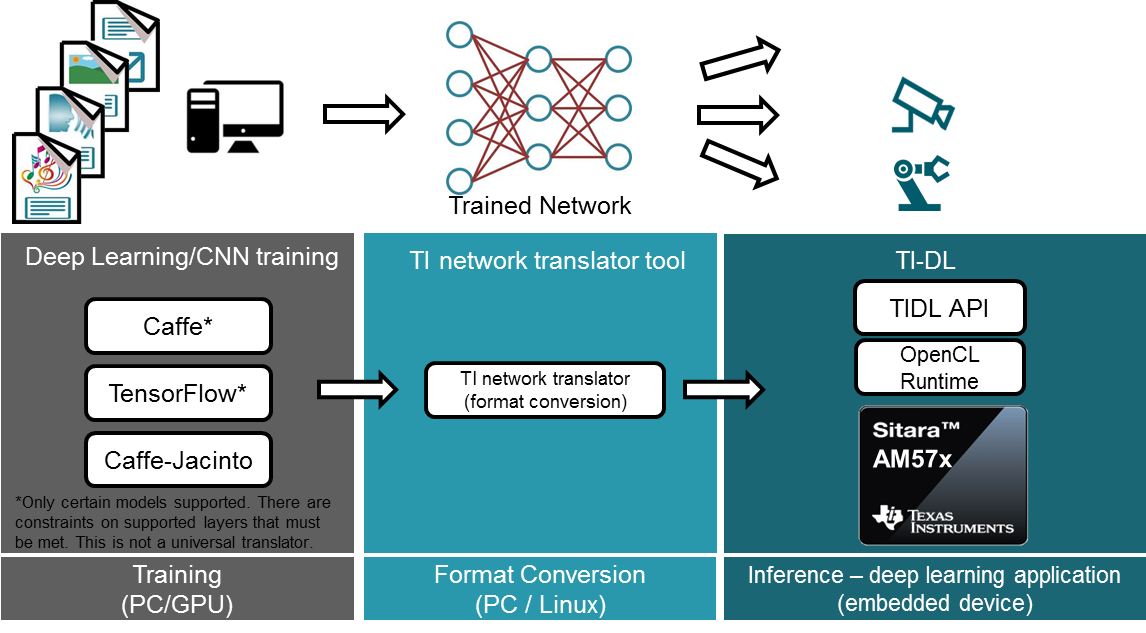Introduction¶
TI Deep Learning (TIDL) API brings deep learning to the edge by enabling applications to leverage TI’s proprietary, highly optimized CNN/DNN implementation on the EVE and C66x DSP compute engines. TIDL will initially target Vision/2D use cases on AM57x Sitara™ Processors.
The TIDL API leverages TI’s OpenCL™ product to offload deep learning applications to both EVE(s) and DSP(s). The TIDL API significantly improves the out-of-box deep learning experience for users and enables them to focus on their overall use case. They do not have to spend time on the mechanics of Arm® ↔ DSP/EVE communication or implementing optimized network layers on EVE(s) and/or DSP(s). The API allows customers to easily integrate frameworks such as OpenCV and rapidly prototype deep learning applications.
Note
This User’s Guide focuses on the TIDL API. For information on TIDL such as the overall development flow, techniques to optimize performance of CNN/DNN on TI’s processors, performance/benchmarking data and list of supported layers, see the TIDL section in the Processor SDK Linux Software Developer’s Guide (TIDL chapter).
Key Features¶
Ease of use
- Easily integrate TIDL APIs into other frameworks such as OpenCV
- Provides simple host abstractions for user applications to run a network across multiple compute cores (EVEs and C66x DSPs). Refer Each EO processes a single frame and Frame split across EOs for details.
Low overhead
The execution time of TIDL APIs on the host is a fairly small percentage of the overall per-frame execution time. For example, with jseg21 network, 1024x512 frame with 3 channels, the APIs account for ~1.5% of overall per-frame processing time.
Development Flow¶
Fig. 1 shows the overall development process. Deep learning consists to two stages: training at development stage and inference at deployment stage. Training involves designing neural network model, running training data through the network to tune the model parameters. Inference takes the pre-trained model including parameters, applies to new input and produces output. Training is computationally intensive and is done using frameworks such as Caffe/TensorFlow. Once the network is trained, the TIDL converter tool can be used to translate the network and parameters to TIDL. The Processor SDK Linux Software Developer’s Guide (TIDL chapter) provides details on the development flow and and the converter tool.

